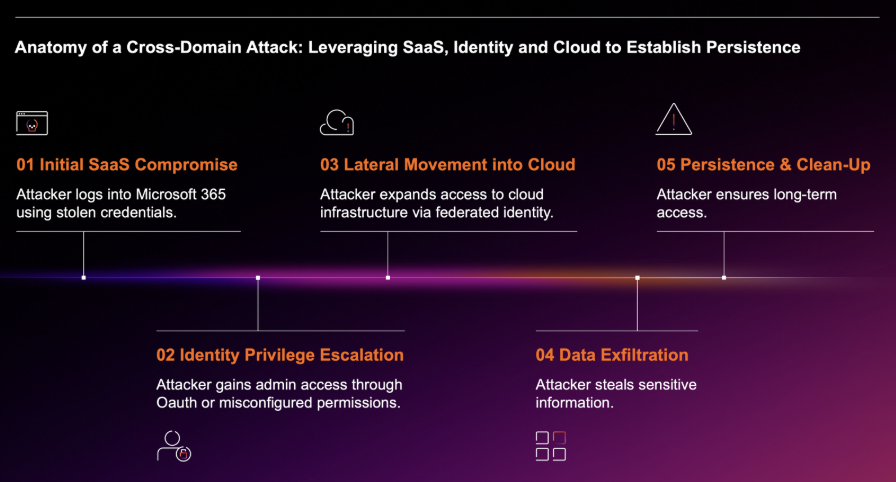AI tools open doors for threat actors
On November 30, 2022, the free conversational language generation model ChatGPT was launched by OpenAI, an artificial intelligence (AI) research and development company. The launch of ChatGPT was the culmination of development ongoing since 2018 and represented the latest innovation in the ongoing generative AI boom and made the use of generative AI tools accessible to the general population for the first time.
ChatGPT is estimated to currently have at least 100 million users, and in August 2023 the site reached 1.43 billion visits [1]. Darktrace data indicated that, as of March 2023, 74% of active customer environments have employees using generative AI tools in the workplace [2].
However, with new tools come new opportunities for threat actors to exploit and use them maliciously, expanding their arsenal.
Much consideration has been given to mitigating the impacts of the increased linguistic complexity in social engineering and phishing attacks resulting from generative AI tool use, with Darktrace observing a 135% increase in ‘novel social engineering attacks’ across thousands of active Darktrace/Email™ customers from January to February 2023, corresponding with the widespread adoption of ChatGPT and its peers [3].
Less overall consideration, however, has been given to impacts stemming from errors intrinsic to generative AI tools. One of these errors is AI hallucinations.
What is an AI hallucination?
AI “hallucination” is a term which refers to the predictive elements of generative AI and LLMs’ AI model gives an unexpected or factually incorrect response which does not align with its machine learning training data [4]. This differs from regular and intended behavior for an AI model, which should provide a response based on the data it was trained upon.
Why are AI hallucinations a problem?
Despite the term indicating it might be a rare phenomenon, hallucinations are far more likely than accurate or factual results as the AI models used in LLMs are merely predictive and focus on the most probable text or outcome, rather than factual accuracy.
Given the widespread use of generative AI tools in the workplace employees are becoming significantly more likely to encounter an AI hallucination. Furthermore, if these fabricated hallucination responses are taken at face value, they could cause significant issues for an organization.
Use of generative AI in software development
Software developers may use generative AI for recommendations on how to optimize their scripts or code, or to find packages to import into their code for various uses. Software developers may ask LLMs for recommendations on specific pieces of code or how to solve a specific problem, which will likely lead to a third-party package. It is possible that packages recommended by generative AI tools could represent AI hallucinations and the packages may not have been published, or, more accurately, the packages may not have been published prior to the date at which the training data for the model halts. If these hallucinations result in common suggestions of a non-existent package, and the developer copies the code snippet wholesale, this may leave the exchanges vulnerable to attack.
Research conducted by Vulcan revealed the prevalence of AI hallucinations when ChatGPT is asked questions related to coding. After sourcing a sample of commonly asked coding questions from Stack Overflow, a question-and-answer website for programmers, researchers queried ChatGPT (in the context of Node.js and Python) and reviewed its responses. In 20% of the responses provided by ChatGPT pertaining to Node.js at least one un-published package was included, whilst the figure sat at around 35% for Python [4].
Hallucinations can be unpredictable, but would-be attackers are able to find packages to create by asking generative AI tools generic questions and checking whether the suggested packages exist already. As such, attacks using this vector are unlikely to target specific organizations, instead posing more of a widespread threat to users of generative AI tools.
Malicious packages as attack vectors
Although AI hallucinations can be unpredictable, and responses given by generative AI tools may not always be consistent, malicious actors are able to discover AI hallucinations by adopting the approach used by Vulcan. This allows hallucinated packages to be used as attack vectors. Once a malicious actor has discovered a hallucination of an un-published package, they are able to create a package with the same name and include a malicious payload, before publishing it. This is known as a malicious package.
Malicious packages could also be recommended by generative AI tools in the form of pre-existing packages. A user may be recommended a package that had previously been confirmed to contain malicious content, or a package that is no longer maintained and, therefore, is more vulnerable to hijack by malicious actors.
In such scenarios it is not necessary to manipulate the training data (data poisoning) to achieve the desired outcome for the malicious actor, thus a complex and time-consuming attack phase can easily be bypassed.
An unsuspecting software developer may incorporate a malicious package into their code, rendering it harmful. Deployment of this code could then result in compromise and escalation into a full-blown cyber-attack.

For providers of Software-as-a-Service (SaaS) products, this attack vector may represent an even greater risk. Such organizations may have a higher proportion of employed software developers than other organizations of comparable size. A threat actor, therefore, could utilize this attack vector as part of a supply chain attack, whereby a malicious payload becomes incorporated into trusted software and is then distributed to multiple customers. This type of attack could have severe consequences including data loss, the downtime of critical systems, and reputational damage.
How could Darktrace detect an AI Package Hallucination Attack?
In June 2023, Darktrace introduced a range of DETECT™ and RESPOND™ models designed to identify the use of generative AI tools within customer environments, and to autonomously perform inhibitive actions in response to such detections. These models will trigger based on connections to endpoints associated with generative AI tools, as such, Darktrace’s detection of an AI Package Hallucination Attack would likely begin with the breaching of one of the following DETECT models:
- Compliance / Anomalous Upload to Generative AI
- Compliance / Beaconing to Rare Generative AI and Generative AI
- Compliance / Generative AI
Should generative AI tool use not be permitted by an organization, the Darktrace RESPOND model ‘Antigena / Network / Compliance / Antigena Generative AI Block’ can be activated to autonomously block connections to endpoints associated with generative AI, thus preventing an AI Package Hallucination attack before it can take hold.
Once a malicious package has been recommended, it may be downloaded from GitHub, a platform and cloud-based service used to store and manage code. Darktrace DETECT is able to identify when a device has performed a download from an open-source repository such as GitHub using the following models:
- Device / Anomalous GitHub Download
- Device / Anomalous Script Download Followed By Additional Packages
Whatever goal the malicious package has been designed to fulfil will determine the next stages of the attack. Due to their highly flexible nature, AI package hallucinations could be used as an attack vector to deliver a large variety of different malware types.
As GitHub is a commonly used service by software developers and IT professionals alike, traditional security tools may not alert customer security teams to such GitHub downloads, meaning malicious downloads may go undetected. Darktrace’s anomaly-based approach to threat detection, however, enables it to recognize subtle deviations in a device’s pre-established pattern of life which may be indicative of an emerging attack.
Subsequent anomalous activity representing the possible progression of the kill chain as part of an AI Package Hallucination Attack could then trigger an Enhanced Monitoring model. Enhanced Monitoring models are high-fidelity indicators of potential malicious activity that are investigated by the Darktrace analyst team as part of the Proactive Threat Notification (PTN) service offered by the Darktrace Security Operation Center (SOC).
Conclusion
Employees are often considered the first line of defense in cyber security; this is particularly true in the face of an AI Package Hallucination Attack.
As the use of generative AI becomes more accessible and an increasingly prevalent tool in an attacker’s toolbox, organizations will benefit from implementing company-wide policies to define expectations surrounding the use of such tools. It is simple, yet critical, for example, for employees to fact check responses provided to them by generative AI tools. All packages recommended by generative AI should also be checked by reviewing non-generated data from either external third-party or internal sources. It is also good practice to adopt caution when downloading packages with very few downloads as it could indicate the package is untrustworthy or malicious.
As of September 2023, ChatGPT Plus and Enterprise users were able to use the tool to browse the internet, expanding the data ChatGPT can access beyond the previous training data cut-off of September 2021 [5]. This feature will be expanded to all users soon [6]. ChatGPT providing up-to-date responses could prompt the evolution of this attack vector, allowing attackers to publish malicious packages which could subsequently be recommended by ChatGPT.
It is inevitable that a greater embrace of AI tools in the workplace will be seen in the coming years as the AI technology advances and existing tools become less novel and more familiar. By fighting fire with fire, using AI technology to identify AI usage, Darktrace is uniquely placed to detect and take preventative action against malicious actors capitalizing on the AI boom.
Credit to Charlotte Thompson, Cyber Analyst, Tiana Kelly, Analyst Team Lead, London, Cyber Analyst
References
[1] https://seo.ai/blog/chatgpt-user-statistics-facts
[2] https://darktrace.com/news/darktrace-addresses-generative-ai-concerns
[3] https://darktrace.com/news/darktrace-email-defends-organizations-against-evolving-cyber-threat-landscape
[4] https://vulcan.io/blog/ai-hallucinations-package-risk?nab=1&utm_referrer=https%3A%2F%2Fwww.google.com%2F
[5] https://twitter.com/OpenAI/status/1707077710047216095
[6] https://www.reuters.com/technology/openai-says-chatgpt-can-now-browse-internet-2023-09-27/










































